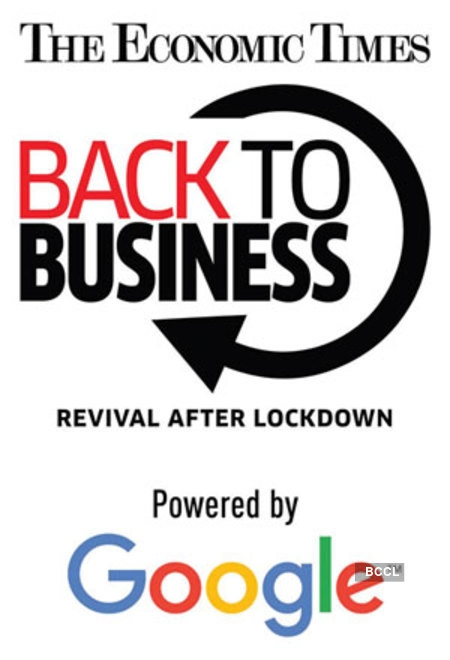September has been an exciting month for Martech. As we get closer to the holiday quarter, we have seen the general economic sentiment improve. Here are the top stories we have been tracking this month:
Table of Contents:
Top Martech Product Updates for September 2020
Top Martech Research in September 2020
Top Martech Partnership Announcements September 2020
Top Martech Movers and Shakers September 2020
Top Martech Product Updates September 2020
Facebook Launches New Business Suite
The social media company unveiled new capabilities that allow business owners to manage posting on Facebook and Instagram at the same time, and manage and receive messages, notifications, and alerts in one place. The company plans to bring its other platforms under Facebook Business Suites such as Messenger and Whatsapp.
Google Releases Tools in Display & Video 360 and Campaign Manager
The new launches are aimed at marketers looking to grow their brand through connected TV (CTV) advertising. The tool feature improves reach forecasting and measurement capabilities, better TV and video ad placements, and new solutions to reach engaged audiences on CTV.
Google will also support marketers with programmatic deals. Users will be able to include deals in their deduplicated reach estimate, which includes open option and YouTube. Media planners can also access Display & Video 360 to find out the top 50 most-watched ad-supported connected TV apps in the US, according to Comscore. The company is also making YouTube inventory available in Display & Video 360.
Marketers and media planners will also be able to find new connected TV viewers who share similarities with their target audience. Similar audiences can be used to extend reach across connected TV inventory sources in Display & Video 360.
Google has also introduced Unique Reach Reporting to include demographic insights for CTV supported devices. Brands can gain a more precise understanding of the impact of ads on CTVs and better articulate their contribution to the overall reach and frequency performance of digital advertising.
Connatix Introduces Social Stories for Publishers
Social Stories helps publishers generate a ‘stories’ format from their own Instagram content, embed it onsite, and monetize it with video advertising. Social Stories, now available on Connatix’s Playspace Platform, creates a direct connection with the publisher’s Instagram account to build self-updating stories for their website. The Story will showcase captions, likes, and comments, and publishers can automatically refresh the content every hour to keep stories fresh. Created stories can easily be monetized through Playspace, which was designed with an integrated ad server and exchange to scale content and maximize revenue.
Amperity 3.0 To Solve End-To-End Customer Data Challenges
Amperity launched the third generation of its Customer Data Platform (CDP), unveiling a new platform purpose-built to solve the spectrum of customer data challenges facing enterprise brands. While the CDP category has grown significantly in the past few years, most vendors have focused on point solutions, some serving IT or Analytics to organize web or mobile data, while others are serving marketers with a focus on data activation and personalization. In many instances, brands are cobbling together multiple CDPs to take control of their data.
Amperity 3.0 features three new products that help enterprises manage and leverage customer data more effectively – AmpID, Amp360, and AmpIQ. Danielle Iserlis, email marketing manager at Vince, told Toolbox, “Everything changed so rapidly this year and because of that, we were most interested in looking at how our customers had been performing during the pandemic. We were interested in taking a closer look at reactivation and acquisition of old and new customers, migration of price point and discount shopping, and impact around how the campaigns we launched during this period affected purchase behavior. Being able to pull customer segments and leverage predictive CLV, discount sensitivity, and affinity models have been a true benefit to our segmentation strategy. The usability of the program, from data extraction to audience and campaign building, has not just made it easy to pull customer lists and transfer them to our ESP, but has had a huge impact across multiple channels to create and analyze various data points.”
SpotX Launches New Programmatic Solutions To Scale Linear Addressable TV
The SpotX’s new solutions are, in part, built in support of the Project OAR open standard, which creates new addressable opportunities by replacing linear spots at the glass (smart TV) level. SpotX is also powering programmatic executions within traditional set-top boxes owned by multichannel video programming distributors (MVPDs), further helping to make addressable television available to programmers via programmatic at scale.
Pega Announces New AI Solution for Customer Engagement
Value Finder, Pega System’s new AI solution helps brands engage with their most underserved customers with messages and offers designed for their specific needs. Part of the Pega Customer Decision Hub, this capability expands the power of 1:1 customer engagement to ensure all customers get personalized, high-empathy treatment – not just the ‘premier’ customers that typically get the most attention.
The Pega Customer Decision Hub feature makes it easy to identify and fill critical customer engagement gaps by identifying underserved customers, filling engagement gaps, simplifying approvals across teams, and optimizing strategies before implementation.
Pega Customer Decision Hub serves as an always-on ‘brain’ providing centralized AI across all customer touchpoints, both inbound and outbound, to optimize every interaction and maximize customer value. Its predictive analytics and customer decision management enable organizations to surface unique insights and recommend the next best action in real-time during every step of the customer journey – from marketing to sales to customer service and retention. Pega Customer Decision Hub provides the responsible AI power across the unified Pega Infinity digital transformation software suite, optimizing customer engagement and operational efficiency from end to end.
ActiveCampaign Adds New Features To its Customer Experience Automation (CXA) Solution
The CXA for Service solution connects service and support interactions to the entire customer experience. CXA for Service uses the newly enhanced Conversations product to inform service and support interactions with customer data from the entire lifecycle. Armed with insights from past purchases, support tickets, email engagement, browsing history, and more, reps can deliver a new level of intelligent service and support.
Top Martech Research in September 2020
Merkle Releases Its 2020 Q3 Customer Engagement Report
The report explores the modern marketing technology platform, how it is implemented, and how marketers feel their platforms deliver engaging customer experiences. Merkle’s research also explores the balance of real-time versus relevant-time activations of data.
According to the report, marketers are generally happy with their existing platforms and latest purchases, but many may not be using them to their full potential. 78% of marketers say their current platforms are delivering the expected ROI, but 68% state they need to build custom platforms to implement their marketing strategies. The top two reasons respondents prefer custom-built platforms versus off-the-shelf platforms are scalability across the organization and more robust features and offerings. This reveals where marketers may be seeing gaps or inefficiencies in their ability to deliver the full customer experience.
The report also features case studies showcasing how a national paint retailer developed a modern marketing platform complete with rich third-party data, and how a national bank leveraged real-time decisioning to build a complex set of customer interactions over time and touchpoints.
Magna Releases Its Ad Spend Forecast for 2020
Digital advertising continues to be a bulwark during the pandemic. Although overall media owner ad revenue in the United States decreased by 7.2% during the first half of the year, digital ad sales grew by 5.7%, according to an updated forecast released by Magna.
Magna expects ad budgets to stabilize and recover in 2021, posting a 3.2% gain. Digital resilience, presidential elections, and entertainment advertising are expected to drive ad spend and digital media in 2020 and beyond.
Valassis Releases New Data on Influencer Marketing
The company released the results of its new consumer research, examining the increasing power of influencer marketing in today’s climate. Consumers’ changing patterns due to the pandemic and heightened awareness of social injustice and systemic inequality have resulted in new opportunities for brands to drive a connection with consumers.
Since the beginning of the coronavirus pandemic in March, 21% of consumers have made an influencer-motivated purchase for the first time. Valassis’ recent Consumer Intel Report shows 35% of consumers made an unplanned purchase based on something they saw on social media as consumption of these channels has increased during the pandemic. Valassis surveyed 1,000 US consumers to gain insight into what motivates them to engage with social influencers, a market that is expected to grow to $15 billion by 2022.
Additionally, the heightened awareness around social injustice has impacted the way consumers engage with influencers. For example, 36% of influencer-following consumers say they are following a more diverse set of influencers than before, and 32% surveyed have purchased more products/services from businesses endorsed by influencers from different racial and cultural backgrounds.
A rigorous vetting process for influencers and content creation is critical to maximizing a brand’s effectiveness and reputation. According to the survey, 65% of consumers say they would stop following an influencer if they do or say something that does not align with their personal ethics and values. This is important for marketers as value alignment also contributes to loyalty and sales. Previous research shows 43% of consumers are more likely to buy products from companies whose values match their own.
Selligent’s Global Study Reveals New Shifts on Consumer Behavior
This year’s study finds seismic shifts in consumer behavior and changing expectations from brands amid the ongoing effects of the global pandemic. 75% of global consumers reported less work (reduced hours, reduced pay, laid off, etc.) due to COVID-19. As a result, a majority (60%) have modified purchases to focus on essential items, like food and safety products. When it comes to interactions with brands, 76% expect real-time email or mobile updates, while 81% value flexibility in returns or cancellations.
While it is clear that consumer spending habits are rapidly changing, data also shows opportunities for brands to cater to the ‘new normal’ of consumerism. Staying at home is a long-term expectation for most, with 58% of people prepared for a future of remote work, and 56% expecting to make new purchases to reflect the shift. They are buying more frequently as well, with 36% shopping online weekly, up from 28% before COVID-19.
Top Martech Partnership Announcements September 2020
Oracle and Sprinklr Join Hands To Improve Customer Service
New integrations between Oracle Fusion Cloud Customer Experience (CX) and Sprinklr will help organizations deliver personalized and connected experiences for customers. The new integrations help marketers reach audiences on social media and other messaging channels at any point in the customer journey. They also help customer service professionals resolve service requests more efficiently.
Lotame and Amobee Partner for Global Social Audience Activation
Lotame and Amobee entered into a global social data partnership to drive customer insights and turn personas into addressable advertising, for enhanced audience targeting and activation across major social networks.
Amobee’s identity solution converts Lotame’s rich taxonomy of unique and privacy-compliant third-party audiences into audience segments that advertisers can use to enhance audience targeting across Facebook, Instagram, Pinterest, Snapchat, and Twitter. This joint social audience offering is now available in all global markets across the Americas, Europe, the Middle East and Africa (EMEA), Asia-Pacific (APAC), and Australia.
This partnership gives marketers access to the full suite of Lotame’s audience segments through the Amobee Advertising Platform, including demographic, interest, and intent data.
Zoox Smart Data and Kubient Announce New Partnership
Kubient and Zoox have struck a strategic partnership to allow advertisers to buy with vetted first-party, consumer-provided audience data, resulting in more efficient spending and maximum value connecting with premium audiences. The partnership enables real-time bidding programmatic access to and from demand platforms, brands, and agencies.
Qlik Deepens Its Partnership With Google Cloud
Qlik and Google launched a new joint offering focused on enabling customers to increase the value of their SAP data with Google BigQuery. Optimized to support SAP data on Google Cloud and Google BigQuery, and reinforced with Qlik’s new ‘SAP on Google Cloud Expertise’ designation, Google Cloud customers now have an integrated solution they can confidently deploy with Qlik Data Integration to help drive more use and value from all their data.
The newly launched solution from Qlik for Google Cloud enables customers to accelerate and simplify the delivery of SAP data for real-time analytics on BigQuery. The integrated solution provides customers an automated, real-time data pipeline through Qlik Data Integration to ingest and automate the delivery of analytics-ready SAP data into BigQuery – whether it is from legacy SAP environments, SAP HANA, or SAP application servers.
Selligent and Five9 Join Forces To Deliver Enhanced Customer Journeys
The partnership will see Selligent join the Five9 App Marketplace, combining the capabilities of Selligent Experience Cloud with the Five9 Intelligent Cloud Contact Center for improved omnichannel customer experiences. By rooting evolving customer experiences in data collected throughout the customer journey, contact center agents are better able to assess needs and deliver resolutions that are timely, relevant and tailored to individual needs.
Top Martech Movers and Shakers September 2020
Facebook Appoints Alex Schultz as Global CMO
Following Antonio Lucio’s departure from Facebook last month, the social media conglomerate has named Alex Schultz as its new global CMO. Schultz previously held the role of VP of product growth and analytics in the company. In his new role, he will continue to report to Javier Olivan, Facebook’s vice president of growth.
Susan Somersille Johnson Named Chief Marketing Officer at Prudential
Susan Somersille Johnson will join the company as chief marketing officer, effective Oct. 5. Johnson will be responsible for leading the company’s global marketing and brand strategy and for helping to drive profitable growth for Prudential. Johnson joins Prudential from Truist Financial, the bank holding company formed in 2019 following the merger of SunTrust Bank and BB&T, where she was corporate executive vice president and chief marketing officer.
Former MAC Cosmetics Exec Joins Amazon Studios as CMO
Ukonwa Ojo joins the tech giant’s entertainment arm from MAC Cosmetics. She will replace Andrew Donkin, who has overseen marketing for Amazon originals and Prime Video since 2018. Ojo, who will lead originals and brand marketing for Amazon Studios and Prime Video, will start on Sept. 21 and report to Hopkins.
Ojo most recently served as global CMO at MAC, which she joined in December 2019. Prior to MAC, she spent three years at Coty, where she led marketing for brands including Covergirl and Sally Hansen. Ojo has also worked at General Mills.
Do you need Digital Marketing or Digital Transformation help in your company? Know how we can help you or your company succeed in the Digital Era. Access our website, know more about our services, and get in touch! We are an amazing Digital Marketing Agency, with high technical skills to make you thrive! JSA Digital
Content Originally Published by Google.
source https://blog.jsa.digital/index.php/2020/09/30/september-2020-martech-roundup-2-google-facebook-announce-new-launches-research-points-to-healthy-digital-growth-and-key-cmo-appointments-announced/









 combines the best of Content Management System (CMS) and Digital Experience Platform (DXP) technology. It enables enterprises to manage content across all digital channels and create inimitable digital experiences. Renowned for earning the highest customer satisfaction in the industry, Contentstack pioneered the headless CMS category and combines content infrastructure with the industry’s #1 integration capabilities to deliver a best-in-class Content Experience Platform (CXP). The preferred API-first CMS for SAP customers, Contentstack was designed from the ground up for large-scale, complex, and mission-critical deployments. Contentstack is a founding member of the
combines the best of Content Management System (CMS) and Digital Experience Platform (DXP) technology. It enables enterprises to manage content across all digital channels and create inimitable digital experiences. Renowned for earning the highest customer satisfaction in the industry, Contentstack pioneered the headless CMS category and combines content infrastructure with the industry’s #1 integration capabilities to deliver a best-in-class Content Experience Platform (CXP). The preferred API-first CMS for SAP customers, Contentstack was designed from the ground up for large-scale, complex, and mission-critical deployments. Contentstack is a founding member of the 